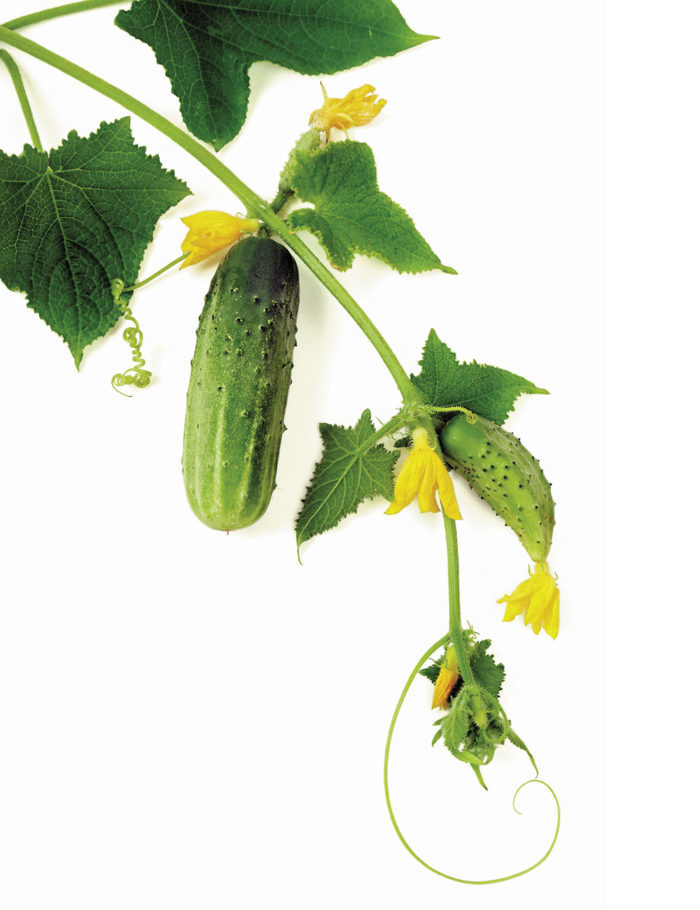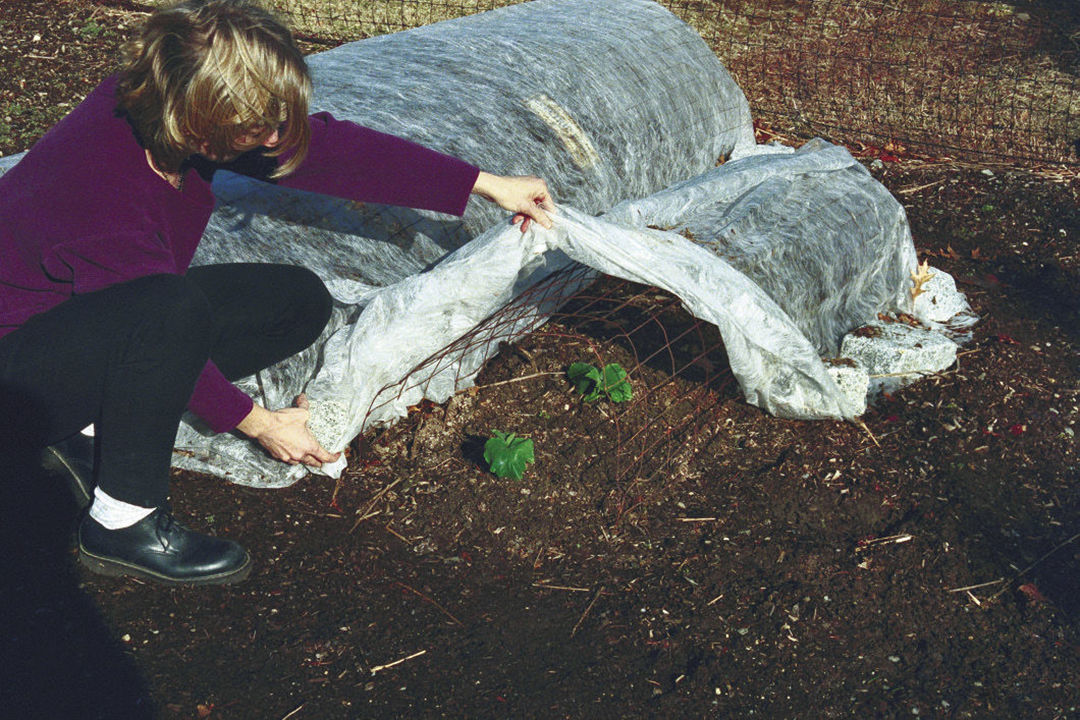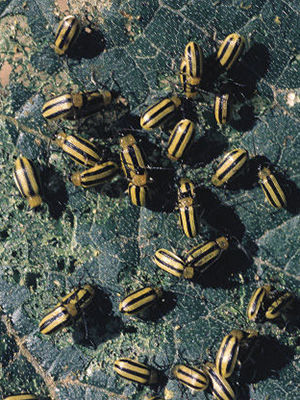How to Grow Cucumbers
This must-have summer crop is easy to grow with the right sun, soil, and space

Good riddance to the cucumbers of a few decades ago—those fat, green, spiny, tough-skinned, and acid-producing fruit that were once served with iceberg lettuce and bottled dressing. Today’s cucumber is a culinary and garden treat—and with good reason: Cucumbers come in all shapes, sizes, colors, and flavors, and are one of the easiest crops to grow. Among the oldest fruits known to agriculture and the most commonly cultivated in the world, the cucumber has adapted to different climates and now includes unique varieties. From bush to pickling to seedless, no garden is complete without a cucumber (or two or three).
Cucumbers grow almost anywhere
Once established, cucumbers thrive in a range of soil types—from dense clay soil to light sandy loam—though all soils should be well drained. It is a good idea to wait for warm weather to plant cucumbers as they are sensitive to soil temperature. If you are starting from seed or transplanting seedlings, be sure that the soil is at least 65°F or they may not survive. Keep in mind that heavier soil tends to stay cool in spring, especially under wet conditions, whereas sandier soil texture is lighter and quicker to warm up. Somewhat heavy feeders, cucumbers will benefit from an application of compost incorporated into the soil prior to planting.

Choose a sunny location, and remember that cucumbers like to sprawl. You can expect their vines to travel easily 5 to 6 feet from the center of the plant, setting fruit farther out along the vines as the season progresses. When laying out your garden, avoid crowding cucumbers or you’ll find that their vines are shooting down pathways and crawling into beds where they don’t belong. Cucumbers are natural climbers, and trellising is a great space-saving strategy. When you let them climb, chances are good for a bigger crop and better-quality fruit as trellising keeps cucumbers off the ground, where they would be susceptible to pests and diseases.
In New England, we set out our initial round of cucumber transplants during the first few days of June, sometimes earlier if the danger of frost has passed. Because nights can still be a little cool at that time of year, we protect the plants with a floating row cover supported by wire hoops. The hoops keep the row cover from resting directly on the new plants, which is especially important on windy days as the cover can damage the plants by roughing them up or snapping their stems.
Cucumber plants have extensive root systems that make them adept at finding the water and nutrients they need. Water the plants deeply but not too often. Holding back on watering encourages the plants to form deeper root systems as they search for moisture. Cucumbers grown in well-drained soil need about an inch of water a week.
Fruit should be harvested often
Once plants are in flower, keep an eye out for tiny fruit forming on the vines. The first fruit will set close to the base of the plant, then farther out as the plants grow. Consult your seed catalog to be sure that you know the ideal harvest size for each variety you’re growing. Some slicing cucumbers, for example, are ready to harvest when they are 8 to 10 inches long, but shorter slicing varieties, like ‘Boothby’s Blonde’, never grow beyond 4 inches long. If left on the plant for too long, cucumbers will get plump, bitter, and seedy. It’s a good idea to check plants every other day once you begin harvesting. Be especially watchful during a heat wave; cucumbers mature quickly when temperatures reach 80°F to 90°F. Remove overgrown or imperfect fruit from the vine as it will use up valuable energy instead of making way for new fruit to form. When harvesting, carefully break or cut the stem with a small serrated knife to avoid tearing the vine and diminishing future flowers and fruit.
Cucumbers can be overwhelming if all your plants are on the same schedule. For this reason, it is worth considering multiple successions of plantings for an extended and manageable harvest.
Be proactive to deter the cucumber beetle
The main pest of the cucumber is the striped cucumber beetle. It feeds on cucumber stems, leaves, flowers, and fruit. Also, the beetle can transmit diseases, such as bacterial wilt. Defense is the best offense when it comes to the cucumber beetle. Here are four recommended strategies:
Use a row cover
A floating row cover creates a physical barrier, preventing the beetle from finding your plants.

Dip plants in kaolin clay

Spray or dip plants in a solution of kaolin clay (brand name Surround) before planting and once a week during the plants’ first month in the garden. A white film dries on the plants, leaving a sticky residue. The beetle is kept busy grooming itself, trying to remove this residue, instead of eating the plants.
Apply mulch
If you’re going to mulch anything in your garden, make cucumbers a priority. Mulch with straw, hay, plastic, or landscape fabric to discourage the beetle from laying its eggs in the soil below the plants. Mulch also prevents weeds, conserves moisture, and protects the soil.
Clean at the end of the season
Once your cucumber crop is done, incorporate healthy fruit residues into the soil so that they break down quickly and thoroughly. Plant debris should be removed, however, as it could harbor overwintering beetles. It’s best to bag and throw out the plant debris that you remove instead of adding it to the compost pile.
Kate Donald is a certified organic grower and co-owner with her husband, Jeff, of Stout Oak Farm in Brentwood, New Hampshire.





Comments
Log in or create an account to post a comment.
Sign up Log in